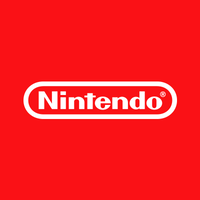The Future of Premium? Hands on With Apple Arcade
by on 20th Sep 2019 in News


By the time Apple's mobile gaming subscription service launched yesterday, we'd all heard plenty of theorising about the potential success, failure and impact of the platform.
A lot of questions remain that will only be answered with the passage of time. But getting it in your hands? There's something all the pre-launch detail and commentary couldn't capture; the feeling of access to Apple Arcade.
If you need a refresher, Apple Arcade was introduced to the App Store yesterday on iPhones, with the debut of iOS13. The service gives access to a growing library of games for a monthly fee of £4.99. Each game is then free to download and play, with no ads, no paid upgrades and no IAP with any real world cost. Just over 70 exclusive games were available on launch, with Apple promising to raise that number to 100 in the coming weeks.
Apple Arcade is perhaps best expressed or understood as a counterpoint to the free-to-play movement. Apple has arguably long-overemphasised the presence of premium games. While free games entirely dominate highest grossing charts considering all iOS games, Apple has continually pushed premium games significantly at the front end of the app store. That's perhaps because across audiences, press and the industry itself, premium games are seen by many as intangibly more credible than their free-to-play contemporaries.
Apple Arcade will likely appeal most to the premium gaming fan, then. After a 30-day free trial expires, nothing is strictly free. But then none of the titles badger or tempt you with the option to spend additional money.
There's also long been an argument that harnessing free-to-play monetisation structures - be they ads, IAP or some other mechanism - inevitably comes at the expense of purity of game design. The golden rule to make a game thrive commercially through ads or IAP is to design it from the ground up with those entities in mind. It's damn tough to reverse engineer or port an existing premium game to work as a free game, both in terms of gameplay and revenues. It's near-implicit, then, that there are limitations when designing for free. You have to design around free, and entangle the experience of paying and playing.

Included games like Sayonara demonstrate the Apple Arcade launch line-up's leaning towards the artful and highly-polished.
Designing for premium, though? There game design rules near-absolute. Premium games can be pieces of art or entertainment (or both) first and foremost, without payment needing to be integrated into their mechanisms and systems. Premium games are sold; they do not sell - DLC expansions and the like aside.
There are plenty of free games that boast of quality game design, of course. But the fact that even the best are designed to monetise is likely the reason premium games are seen as more credible, and why app store editors thrust them to the fore. After all, a typical premium game charges you its upfront cost, and then - at least in Apple Arcade - doesn't request you let an indefinite extra amount leave your wallet.
And now we have Apple Arcade, which focuses on premium games, and assures the user they won't be badgered with requests to part with cash or watch videos in return for in-game items. It cuts out the ad networks, the free-to-play rule book, the payment platforms and the rest of the ecosystem built around free. Of course, the vast existing store and marketplace for all the rest of the iOS games will continue to serve millions. Apple Arcade is an alternative offering; not a replacement for the App Store model.
It's easy to assume Apple have big hopes for Arcade. Could this subscription service be so successful it re-balances the premium/free dynamic, and sees a dip in the focus on free? That's likely a bit of an overstatement. Will this prove that most users still prefer premium? Probably not. Does Apple Arcade offer a new means to make a financial success of more premium games? It might do, but it all depends on the number of maintaining subscribers.
The Apple Arcade model certainly doesn't make it hard for one to pick holes, if you want to look for them. It limits individual choice by offering a curated list. A focus - for now - on exclusivity has already put off some developers. It puts more power over games' presence across the App Store in Apple's hands. It could even prevent subscribed players from feeling inclined to explore the rest of the app store, perhaps even creating an elite tier at the expense of other games.
OK; that last one might be a bit much, but Apple Arcade isn't infallible.
And then your get access for the first time. The launch line up is remarkably impressive, with highly polished and artful titles that showcase the potential of mobile games to transcend their platform and exists simply as brilliant pieces of interactive entertainment. There's Assemble with Care by Monument Valley outfit ustwo, the 'mutant soap opera' Mutazione, literary wordplay puzzler Dear Reader, and the silly but sublime Cricket Through the Ages. Choose to download any of the 70-plus games currently available, and they appear on your phone's home screen like any other app.

The silly but sublime Cricket Through the Ages
And that's when it feels exciting. There's a lot of games to take in at first - to the point the platform almost has its own micro-discoverability; problem. And the flow of the onboarding to join Apple Arcade can feel bewildering at first. But the moment you realise you can pack you phone with what might otherwise be hundreds of pounds of premium games, and pick them without having to pause for thought, as if they were free? In that moment Apple Arcade feels like it really should be the future of mobile games, even if it isn't.
While you are in the free trial period in particular, Apple Arcade appears unbelievably worthwhile. It's a chance to enjoy some brilliant titles at no cost.
But if Apple Arcade is to meet it's potential of reinvigorating the free/premium power balance, lending a new focus to games that eschew monetisation through in-game mechanisms, and spotlight more distinct titles, Apple Arcade will need a lot of sustaining paid subscribers. And those paid subscribers will need to be excited and delighted for the platform for months to come.
It would be fascinating and encouraging is Apple Arcade did become a significant, influential part of how people find, select and play mobile games. It is entirely possible that the platform could instead persist for years as a sizeable niche in a tucked away corner of the App Store. Or it may flop like Amazon's own move to address issues around free-to-play; Underground.
It all comes down to the games, then. If Apple can delight consumers, continue to convince developers, and make the financial model lastingly successful for all involved, Apple Arcade may be here to stay. And while calling an end to the dominance of free is likely unwise, it may give more developers a reason to consider going premium, releasing themselves from the design restrictions IAP and ads can introduce.
App StoresAppleAudienceCreativeDeveloperGamingIn-AppMobileMonetisationPlayersPublisherUncategorized







Follow TheGamingEconomy